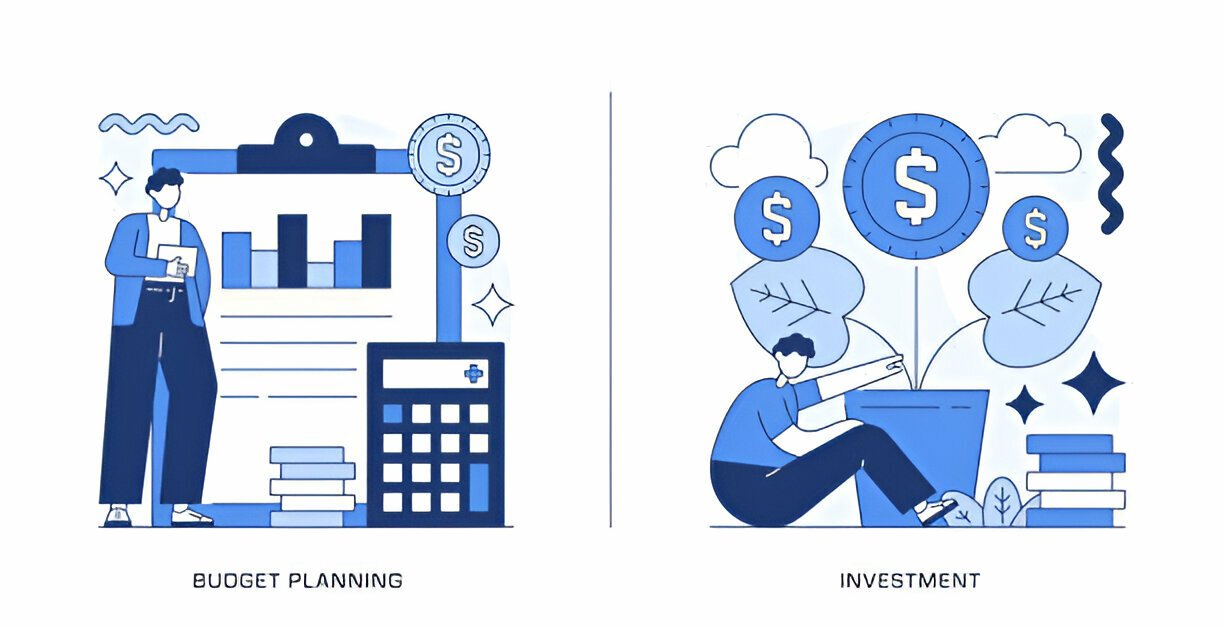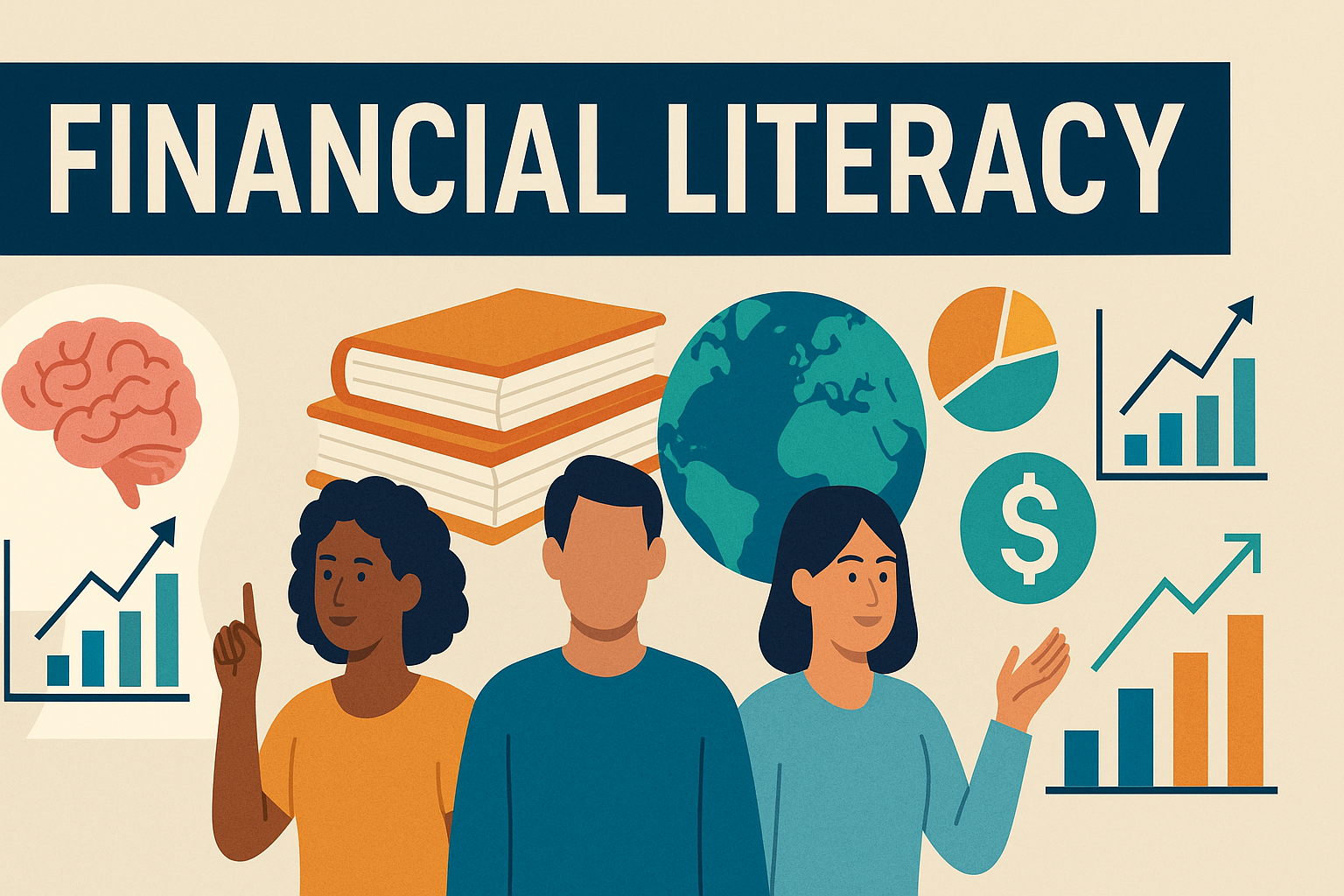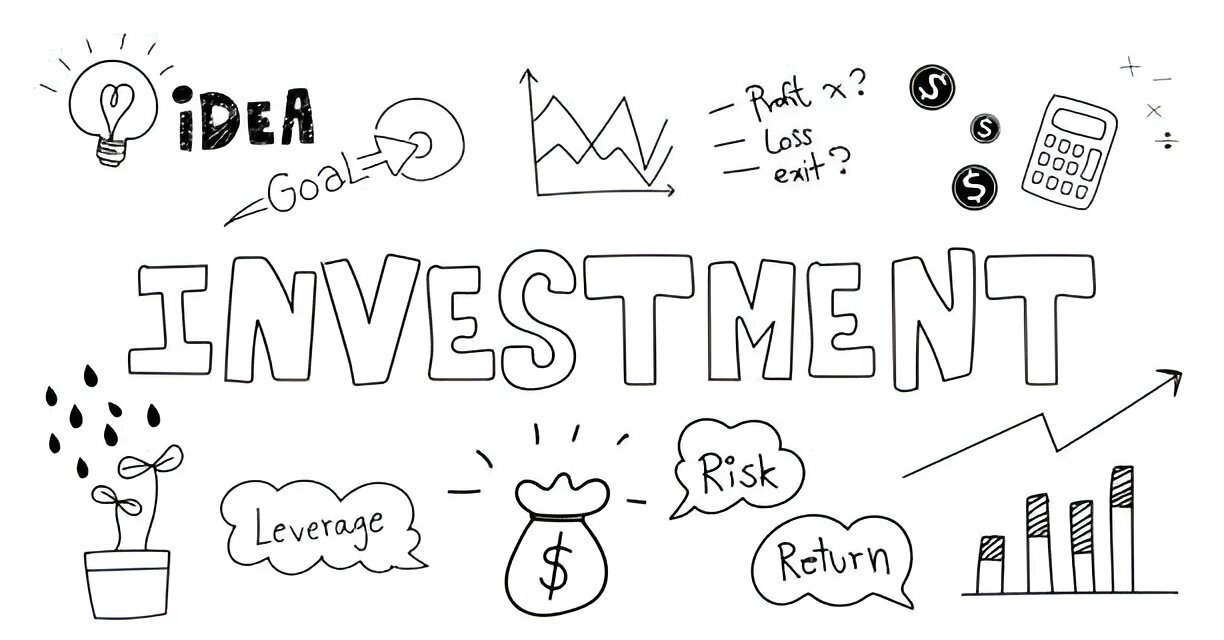1. Introduction: Your Journey to Financial Freedom Starts Today
Picture this: You’re lying awake at 2 AM, staring at the ceiling, your mind racing with financial worries. “Will I ever be able to retire?” “How will I afford my kids’ college tuition?” “What if I lose my job?” These thoughts plague millions of Americans every single night, creating a cycle of stress and anxiety that seems impossible to break.
But here’s what might surprise you: The solution to these sleepless nights isn’t earning more money—it’s making your money work harder for you. While you’ve been trading hours for dollars, the wealthy have been using a different playbook entirely. They’ve discovered the secret that turns time into their greatest ally rather than their biggest enemy.
Consider this sobering reality: According to the Federal Reserve’s 2022 Survey of Consumer Finances, the median retirement savings for Americans aged 55-64 is just $185,000. That’s barely enough to last five years in retirement. Meanwhile, those who started invest-in-cryptocurrency” title=”How to Invest in Cryptocurrency: A Beginner’s Guide to Tr…”>invest-in-cryptocurrency” title=”How to Invest in Cryptocurrency: A Beginner’s Guide to Tr…”>invest-in-cryptocurrency” title=”How to Invest in Cryptocurrency: A Beginner’s Guide to Tr…”>invest-in-cryptocurrency” title=”How to Invest in Cryptocurrency: A Beginner’s Guide to Tr…”>invest-in-cryptocurrency” title=”How to Invest in Cryptocurrency: A Beginner’s Guide to Tr…”>invest-in-cryptocurrency” title=”How to Invest in Cryptocurrency: A Beginner’s Guide to Tr…”>invest-in-cryptocurrency” title=”How to Invest in Cryptocurrency: A Beginner’s Guide to Tr…”>invest-in-cryptocurrency” title=”How to Invest in Cryptocurrency: A Beginner’s Guide to Tr…”>invest-in-cryptocurrency” title=”How to Invest in Cryptocurrency: A Beginner’s Guide to Tr…”>invest-in-cryptocurrency” title=”How to Invest in Cryptocurrency: A Beginner’s Guide to Tr…”>invest-in-cryptocurrency” title=”How to Invest in Cryptocurrency: A Beginner’s Guide to Tr…”>invest-in-cryptocurrency” title=”How to Invest in Cryptocurrency: A Beginner’s Guide to Tr…”>invest-in-cryptocurrency” title=”How to Invest in Cryptocurrency: A Beginner’s Guide to Tr…”>invest-in-cryptocurrency” title=”How to Invest in Cryptocurrency: A Beginner’s Guide to Tr…”>invest-in-cryptocurrency” title=”How to Invest in Cryptocurrency: A Beginner’s Guide to Tr…”>invest-in-cryptocurrency” title=”How to Invest in Cryptocurrency: A Beginner’s Guide to Tr…”>invest-in-cryptocurrency” title=”How to Invest in Cryptocurrency: A Beginner’s Guide to Trading Digital Money”>invest-in-stocks” title=”How to Invest in Stocks With Little Money or Experience”>invest-in-cryptocurrency” title=”How to Invest in Cryptocurrency: A Beginner’s Guide to Trading Digital Money”>invest-in-stocks” title=”How to Invest in Stocks With Little Money or Experience”>invest-in-cryptocurrency” title=”How to Invest in Cryptocurrency: A Beginner’s Guide to Trading Digital Money”>invest-in-stocks” title=”How to Invest in Stocks With Little Money or Experience”>invest-in-cryptocurrency” title=”How to Invest in Cryptocurrency: A Beginner’s Guide to Trading Digital Money”>invest-in-cryptocurrency” title=”How to Invest in Cryptocurrency: A Beginner’s Guide to Trading Digital Money”>invest-in-stocks” title=”How to Invest in Stocks With Little Money or Experience”>invest-in-cryptocurrency” title=”How to Invest in Cryptocurrency: A Beginner’s Guide to Trading Digital Money”>invest-in-stocks” title=”How to Invest in Stocks With Little Money or Experience”>invest-in-cryptocurrency” title=”How to Invest in Cryptocurrency: A Beginner’s Guide to Trading Digital Money”>invest-in-stocks” title=”How to Invest in Stocks With Little Money or Experience”>invest-in-cryptocurrency” title=”How to Invest in Cryptocurrency: A Beginner’s Guide to Trading Digital Money”>invest-your-first-500k-in-nigeria” title=”16 Places To Invest Your First 500k In Nigeria”>Places To Invest Your First 500k In Nigeria”>Places To Invest Your First 500k In Nigeria”>Places To Invest Your First 500k In Nigeria”>Places To Invest Your First 500k In Nigeria”>Places To Invest Your First 500k In Nigeria”>Places To Invest Your First 500k In Nigeria”>Places To Invest Your First 500k In Nigeria”>Places To Invest Your First 500k In Nigeria”>Places To Invest Your First 500k In Nigeria”>Places To Invest Your First 500k In Nigeria”>Places To Invest Your First 500k In Nigeria”>Places To Invest Your First 500k In Nigeria”>Places To Invest Your First 500k In Nigeria”>Places To Invest Your First 500k In Nigeria”>Places To Invest Your First 500k In Nigeria”>Places To Invest Your First 500k In Nigeria”>Places To Invest Your First 500k In Nigeria”>Places To Invest Your First 500k In Nigeria”>Places To Invest Your First 500k In Nigeria”>Places To Invest Your First 500k In Nigeria”>Places To Invest Your First 500k In Nigeria”>Places To Invest Your First 500k In Nigeria”>Places To Invest Your First 500k In Nigeria”>investing in their twenties and consistently contributed to their portfolios have accumulated wealth that seemed impossible when they first began.
The difference isn’t luck, inheritance, or some secret insider knowledge. It’s simply understanding how to harness the most powerful force in finance: compound interest. Albert Einstein allegedly called it “the most powerful force in the universe,” and for good reason. When you invest $500 monthly starting at age 25 with a 7% annual return, you’ll have over $1.3 million by age 65. Wait until 35 to start, and that number drops to just $610,000. That decade of delay costs you nearly $700,000.
This isn’t just about numbers on a screen or abstract financial concepts. This is about the freedom to choose your own path, the security of knowing you can weather any financial storm, and the peace of mind that comes from building something that will protect you and your family for generations. More From Mobelwealth: Best Texas unemployment benefits Strategies That Actually Work: Complete Guide [2025]
Throughout this comprehensive guide, you’ll discover exactly how to start investing” title=”Investing for Beginners: Complete Guide to Getting Started”>investing” title=”Investing for Beginners: Complete Guide to Getting Started”>investing” title=”Investing for Beginners: Complete Guide to Getting Started”>investing” title=”Investing for Beginners: Complete Guide to Getting Started”>investing” title=”Investing for Beginners: Complete Guide to Getting Started”>investing for beginners, even if you’ve never bought a single stock or fund in your life. We’ll walk through building your first portfolio step-by-step, choosing the right Proven Investment Strategies to Maximize Your Wealth i…”>Proven Investment Strategies to Maximize Your Wealth i…”>Proven Investment Strategies to Maximize Your Wealth i…”>Proven Investment Strategies to Maximize Your Wealth i…”>Proven Investment Strategies to Maximize Your Wealth i…”>Proven Investment Strategies to Maximize Your Wealth i…”>Proven Investment Strategies to Maximize Your Wealth i…”>Proven Investment Strategies to Maximize Your Wealth i…”>Proven Investment Strategies to Maximize Your Wealth i…”>Proven Investment Strategies to Maximize Your Wealth i…”>Proven Investment Strategies to Maximize Your Wealth i…”>Proven Investment Strategies to Maximize Your Wealth i…”>Proven Investment Strategies to Maximize Your Wealth i…”>Proven Investment Strategies to Maximize Your Wealth i…”>Proven Investment Strategies to Maximize Your Wealth i…”>Proven Investment Strategies to Maximize Your Wealth i…”>Proven Investment Strategies to Maximize Your Wealth in 2025″>Proven Investment Strategies to Maximize Your Wealth in 2025″>Proven Investment Strategies to Maximize Your Wealth in 2025″>Proven Investment Strategies to Maximize Your Wealth in 2025″>Proven Investment Strategies to Maximize Your Wealth in 2025″>Proven Investment Strategies to Maximize Your Wealth in 2025″>Proven Investment Strategies to Maximize Your Wealth in 2025″>investment-strategies-to-maximize-your-wealth-in-2025″ title=”10 Proven Investment Strategies to Maximize Your Wealth in 2025″>investment accounts, understanding risk management, and avoiding the costly mistakes that trip up 90% of new investors.
You’ll learn why trying to time the market is a fool’s errand, how to create a diversified portfolio that can weather any economic storm, and the specific strategies that have helped ordinary people build extraordinary wealth. Most importantly, you’ll discover that you don’t need to be a financial genius or have thousands of dollars to get started—you just need the right knowledge and the courage to take that first step.
By the end of this guide, you’ll have everything you need to make your first investment and start building the financial future you deserve. The question isn’t whether you can afford to start investing—it’s whether you can afford not to.

2. Understanding Investment Fundamentals
Before diving into the mechanics of portfolio building, it’s crucial to establish a solid foundation of investment knowledge. Think of this section as building the bedrock upon which your entire financial future will rest. Without understanding these core principles, you’re essentially flying blind in one of the most important aspects of your financial life.
What Investing Really Means and Why It Matters
At its core, investing is the act of putting your money to work so it can grow over time without requiring your active involvement. Unlike saving, where your money sits safely but grows minimally, investing involves some level of risk in exchange for the potential of significantly higher returns. This isn’t gambling—it’s calculated risk-taking based on historical data, economic principles, and mathematical probabilities.
The reason investing matters so much goes beyond just accumulating wealth. In today’s economic environment, with inflation averaging 2-3% annually, money sitting in traditional savings accounts actually loses purchasing power over time. A dollar today won’t buy the same amount of goods twenty years from now. Investing isn’t just about getting rich—it’s about maintaining and growing your purchasing power to ensure your future self can live at least as well as your present self, if not better.
The Power of Compound Interest with Real Examples
Compound interest is often misunderstood as a complex financial concept, but it’s actually beautifully simple: it’s earning returns on your original investment plus all the returns you’ve previously earned. Instead of just earning interest on your principal, you earn interest on your interest, creating a snowball effect that accelerates over time.
Let’s examine a real-world example that demonstrates this power. Sarah starts investing $300 monthly at age 22, immediately after college. She invests consistently until age 32, contributing a total of $36,000 over ten years. Then she stops contributing entirely but leaves her money invested. Her friend Mike waits until age 32 to start investing but contributes $300 monthly until age 62, a total of $108,000 over thirty years. Assuming both earn a 7% annual return, Sarah ends up with more money at retirement despite contributing one-third the amount Mike did. This is the magic of compound interest, time is more valuable than the amount you invest.
Different Types of Investments Explained Simply
The investment universe can seem overwhelming with its alphabet soup of acronyms and complex-sounding instruments, but most investments fall into several basic categories. Stocks represent ownership shares in companies, when you buy Apple stock, you literally own a tiny piece of Apple Inc. and participate in its profits and growth. Bonds are essentially IOUs where you lend money to governments or corporations in exchange for regular interest payments and the return of your principal.
Real estate investments allow you to participate in property markets without actually buying physical properties, while commodities let you invest in physical goods like gold, oil, or agricultural products. Each investment type has different risk-return profiles, liquidity characteristics, and roles in a well-diversified portfolio. Understanding these differences helps you make informed decisions about which investments align with your goals and risk tolerance.
Risk vs. Return Relationship
One of the most fundamental principles in investing is that risk and return are inextricably linked, you cannot expect higher returns without accepting higher risk. This doesn’t mean you should avoid all risky investments; rather, you should understand what risks you’re taking and ensure you’re being adequately compensated for those risks through higher expected returns.
Conservative investments like high-grade government bonds offer lower returns but greater certainty, while growth stocks offer the potential for substantial gains but also the possibility of significant losses. The key is finding the right balance for your situation. A 25-year-old saving for retirement can afford to take more risk because they have decades to recover from any short-term losses, while someone five years from retirement should prioritize capital preservation over growth.
Time Horizon and Its Impact on Investment Strategy
Your investment time horizon, how long you plan to keep your money invested before needing it, is perhaps the most critical factor in determining your appropriate investment strategy. Short-term goals (less than five years) require different approaches than long-term objectives (more than ten years), and this impacts everything from asset allocation to the specific investments you choose. More from mobelwealth: Best Budgeting Apps to Get Your Finances Together in 2025 Tto 2026
For short-term goals, stability becomes paramount because you can’t afford to have your money lose value right when you need it. This means focusing on lower-risk investments like high-yield savings accounts, CDs, or short-term bond funds. For long-term goals, however, you can afford to ride out market volatility in exchange for the higher returns that riskier investments have historically provided. Understanding your time horizon helps you choose investments that align with when you’ll need your money and how much risk you can realistically handle.
8. Conclusion and Next Steps
Your journey into the world of investing doesn’t have to be overwhelming or intimidating. Throughout this comprehensive guide, we’ve broken down the complex world of portfolio building into manageable, actionable steps that any beginner can follow. Let’s recap the key insights that will serve as your roadmap to financial success.
We started by understanding that investing isn’t just about making money, it’s about securing your financial future and building the freedom to live life on your own terms. The power of compound interest works like magic when you give it time, turning small, consistent contributions into substantial wealth over the decades. Remember Sarah’s story: starting early with smaller amounts beats starting later with larger contributions every single time.
The fundamentals we covered, understanding different investment types, the risk-return relationship, and the critical importance of your time horizon, form the foundation of every successful investment strategy. These aren’t just theoretical concepts; they’re practical tools that will guide every investment decision you make for the rest of your life. When market volatility hits (and it will), these principles will keep you grounded and focused on your long-term goals.
Setting clear, SMART investment goals emerged as a crucial early step that many beginners skip to their detriment. Your goals determine everything else: your risk tolerance, asset allocation, account choices, and investment timeline. Whether you’re saving for retirement, a home down payment, or your children’s education, having specific, measurable objectives keeps you motivated and on track during both market highs and lows.
Building your first portfolio might seem daunting, but we’ve shown you that successful portfolio construction follows time-tested principles: diversification across asset classes, age-appropriate asset allocation, and regular rebalancing. The beauty of modern investing is that you don’t need to pick individual stocks or try to time the market. Simple, low-cost index funds and ETFs provide instant diversification and have outperformed the majority of professional fund managers over the long term.
Choosing the right investment accounts can save you thousands in taxes over your investing lifetime. Taking advantage of employer 401(k) matching is literally free money, there’s no investment strategy that can match a guaranteed 100% return. Tax-advantaged accounts like IRAs and HSAs provide powerful tools for building wealth while minimizing your tax burden, but understanding the rules and contribution limits is essential for maximizing their benefits.
The investment vehicles we explored, from index funds and ETFs to individual stocks and REITs, each serve different purposes in a well-constructed portfolio. As a beginner, starting with broad-market index funds provides the perfect balance of diversification, low costs, and simplicity. As you gain knowledge and confidence, you can gradually add other investment types to enhance your portfolio’s risk-return profile.
Perhaps most importantly, we’ve addressed the common mistakes that derail many new investors: emotional decision-making, trying to time the market, neglecting diversification, and paying excessive fees. Knowledge of these pitfalls is your best defense against them. Remember, successful investing is more about avoiding big mistakes than making brilliant moves.
Your Immediate Action Plan:
The time for learning is over, now it’s time for action. Start by calculating exactly how much you can afford to invest monthly without straining your budget. Even $50 per month is a meaningful start that can grow into substantial wealth over time. Open a brokerage account with a reputable, low-cost provider and take advantage of any employer 401(k) matching immediately.
Choose a simple, diversified index fund for your first investment, something like a total stock market index fund or target-date fund appropriate for your age. Set up automatic monthly contributions to take emotion and procrastination out of the equation. Dollar-cost averaging through automatic investing has helped countless investors build wealth without the stress of trying to time their purchases.
Review and adjust your investments annually, but resist the urge to check your balance daily or make frequent changes based on market news. Successful investing is boring, the excitement should come from watching your wealth compound over years and decades, not from day-to-day market movements.
RECOMMENDED STEPS TO TAKE
🧘♂️ 1️⃣ The “Spy and Chill” Strategy: Simplicity at Its Finest
Sometimes, the best approach is the simplest one. The “Spy and Chill” strategy means putting most of your available funds in an S&P 500 tracking ETF, such as SPY, VOO, or SPLG. By doing this, you instantly diversify across 500 of the largest and most successful companies in the U.S.
Why it works:
✅ Easy to understand and implement
✅ Provides instant diversification
✅ Great for beginners who want a hands-off approach
💡 Pro tip: You can choose to keep a small percentage (like ~10%) in cash so you can buy more shares when the market dips.
🔀 2️⃣ Balancing Act: Diversify Across Different Asset Classes
For a more balanced plan, you can consider spreading your investments across a few ETFs that cover different parts of the market. A simple trio for example:
- S&P 500 ETF (SPY, SPLG): Core broad-market exposure.
- NASDAQ 100 ETF (QQQ, QQQM): Focus on growth and tech.
- High-Yield Dividend ETF (SCHD, VYM): Income through dividends.
Why it works:
✅ Reduces risk by not putting all your eggs in one basket
✅ Gives you exposure to both stability (dividends) and growth (tech stocks)
Think of it like Goldilocks:
- SCHD is the “soft bed” — steady income.
- QQQ is the “hard bed” — big growth, bigger swings.
- SPY is “just right” — a balance of both.
⚖️ 3️⃣ Understand Your Risk Tolerance: Pick the Right Mix
How you split your money depends on your age, goals, and risk appetite.
- Young and growth-oriented? If you have 20–40 years to invest, maybe lean heavier on growth ETFs like QQQ.
- Closer to retirement or want steady cash flow? Maybe go more conservative: bigger allocation to dividend ETFs like SCHD.
Key takeaway:
✅ There’s no one-size-fits-all — your plan should change as your life does.
⏱️ 4️⃣ Dollar-Cost Averaging vs. Lump-Sum Investing
Timing matters. Two classic ways to invest:
- Dollar-Cost Averaging (DCA): Invest a set amount at regular intervals (e.g., $2,000/month). This smooths out buying prices and reduces the risk of timing the market badly.
- Lump-Sum Investing: Put a large amount in the market all at once. Historically, this can outperform DCA but requires strong nerves.
Key takeaway:
✅ Pick what fits your comfort level — both work if you stay consistent.
Your Long-Term Wealth Building Perspective:
Remember that building wealth through investing is a marathon, not a sprint. The investors who achieve true financial independence are those who start early, invest consistently, keep costs low, and stay the course through market ups and downs. Every month you delay starting costs you potential compound growth that can never be recovered.
The strategies and principles outlined in this guide have worked for millions of successful investors before you, and they’ll continue to work as long as human innovation and economic growth continue. Trust in the process, stay educated, and adjust your strategy as your life circumstances change.
Your future self will thank you for taking action today. The peace of mind that comes from knowing you’re building a secure financial future is worth far more than any short-term sacrifice you might make to free up money for investing. Start today, stay consistent, and let time work its magic.
The path to financial freedom isn’t reserved for the wealthy or the financially sophisticated—it’s available to anyone willing to start, learn, and persist. Your journey begins with your very next investment.
FAQ Section
How much money do I need to start investing?
You can start investing with as little as $1 through many modern brokerages and robo-advisors. While having more money allows for greater diversification, the most important factor is starting as soon as possible to maximize the power of compound interest. Many experts recommend starting with whatever amount won’t strain your budget—even $25-50 monthly can grow substantially over time.
Should I pay off debt before investing?
This depends on the interest rates on your debt versus expected investment returns. Pay off high-interest debt (credit cards, personal loans above 6-7%) before investing. For lower-interest debt like mortgages or student loans, you can often benefit from investing simultaneously while making minimum payments, especially if your employer offers 401(k) matching.
What’s the difference between a 401(k) and an IRA?
A 401(k) is an employer-sponsored retirement account that often includes company matching contributions, while an IRA is an individual retirement account you open independently. 401(k)s typically have higher contribution limits but more limited investment options. IRAs offer more investment flexibility but lower contribution limits. Many people benefit from contributing to both.
How often should I check my investments?
Checking your investments monthly or quarterly is sufficient for most long-term investors. Daily checking can lead to emotional decision-making and unnecessary stress. Set up automatic contributions and rebalancing, then review your overall strategy annually or when major life changes occur.
What should I do if the market crashes after I start investing?
Market downturns are normal and expected parts of investing. Continue your regular contributions—market crashes actually present opportunities to buy investments at lower prices. Historically, markets have always recovered from crashes, and investors who stayed invested through downturns were rewarded for their patience.
Is it better to invest in individual stocks or index funds as a beginner?
Index funds are generally better for beginners because they provide instant diversification, professional management, and lower risk than individual stocks. Once you have a solid foundation in index funds and have gained more knowledge and experience, you might consider adding some individual stocks to your portfolio.
How do I know if I’m taking too much or too little risk?
Your risk tolerance should align with your time horizon and financial goals. If market volatility keeps you awake at night or causes you to make emotional investment decisions, you may be taking too much risk. Conversely, if your investments aren’t growing fast enough to meet your long-term goals, you might need to accept more risk for higher potential returns.













Loading comments...
Leave a Comment(Login required)